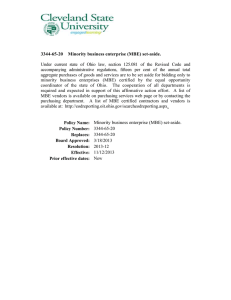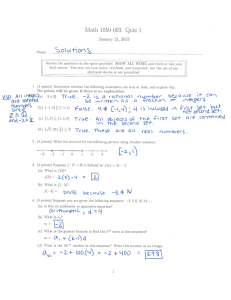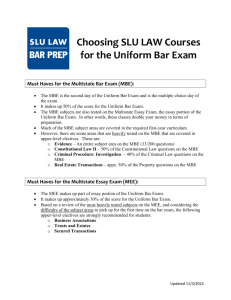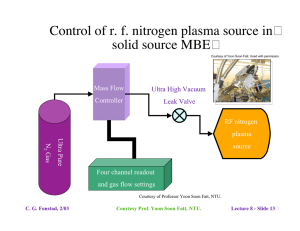MBE
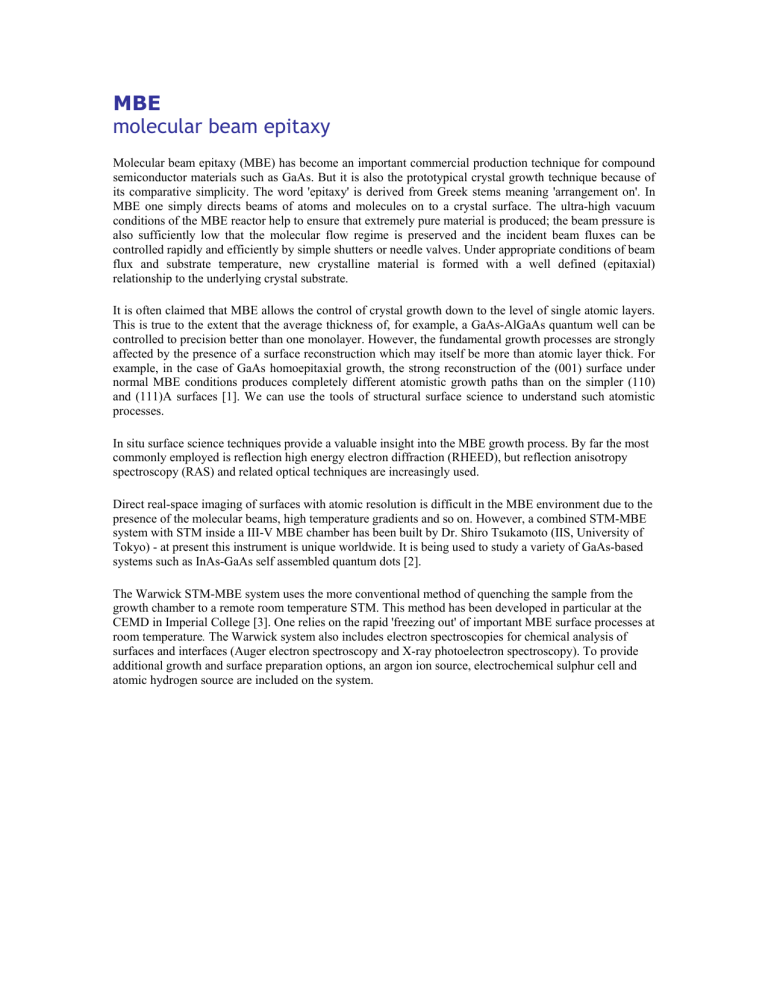
MBE
molecular beam epitaxy
Molecular beam epitaxy (MBE) has become an important commercial production technique for compound semiconductor materials such as GaAs. But it is also the prototypical crystal growth technique because of its comparative simplicity. The word 'epitaxy' is derived from Greek stems meaning 'arrangement on'. In
MBE one simply directs beams of atoms and molecules on to a crystal surface. The ultra-high vacuum conditions of the MBE reactor help to ensure that extremely pure material is produced; the beam pressure is also sufficiently low that the molecular flow regime is preserved and the incident beam fluxes can be controlled rapidly and efficiently by simple shutters or needle valves. Under appropriate conditions of beam flux and substrate temperature, new crystalline material is formed with a well defined (epitaxial) relationship to the underlying crystal substrate.
It is often claimed that MBE allows the control of crystal growth down to the level of single atomic layers.
This is true to the extent that the average thickness of, for example, a GaAs-AlGaAs quantum well can be controlled to precision better than one monolayer. However, the fundamental growth processes are strongly affected by the presence of a surface reconstruction which may itself be more than atomic layer thick. For example, in the case of GaAs homoepitaxial growth, the strong reconstruction of the (001) surface under normal MBE conditions produces completely different atomistic growth paths than on the simpler (110) and (111)A surfaces [1]. We can use the tools of structural surface science to understand such atomistic processes.
In situ surface science techniques provide a valuable insight into the MBE growth process. By far the most commonly employed is reflection high energy electron diffraction (RHEED), but reflection anisotropy spectroscopy (RAS) and related optical techniques are increasingly used.
Direct real-space imaging of surfaces with atomic resolution is difficult in the MBE environment due to the presence of the molecular beams, high temperature gradients and so on. However, a combined STM-MBE system with STM inside a III-V MBE chamber has been built by Dr. Shiro Tsukamoto (IIS, University of
Tokyo) - at present this instrument is unique worldwide. It is being used to study a variety of GaAs-based systems such as InAs-GaAs self assembled quantum dots [2].
The Warwick STM-MBE system uses the more conventional method of quenching the sample from the growth chamber to a remote room temperature STM. This method has been developed in particular at the
CEMD in Imperial College [3]. One relies on the rapid 'freezing out' of important MBE surface processes at room temperature . The Warwick system also includes electron spectroscopies for chemical analysis of surfaces and interfaces (Auger electron spectroscopy and X-ray photoelectron spectroscopy). To provide additional growth and surface preparation options, an argon ion source, electrochemical sulphur cell and atomic hydrogen source are included on the system.
We are presently embarking on a detailed study of interface formation between half-metallic ferromagnetic (HMF) materials and semiconductors. HMFs are very promising materials for spin injection, i.e. the production of spin polarised currents in semiconductor device structures. Such 'active spintronic devices' have a great potential, including implementation of solid state quantum computation. The MBE conditions for successful growth of high quality HMF materials have been established [4].
However, it is crucial that we tackle the problem of maintaining half-metallicity (100% spin polarisation at the Fermi level) in the
HMF right up to the interface. This property relies on the precise control of the interface structure down to the single atomic layer level.
In order to do this we are combining density functional theory
(DFT) calculations of the interfaces with experimental studies of their atomic structure. The DFT calculations are being carried out at the University of Cambridge by Dr. Steve Jenkins [4].
The figure shows the electron density associated with two minority spin surface states at the NiMnSb(001) surface, calculated with
DFT. Such states, if not suppressed by correct interface formation, could inhibit electrical spin injection.
We also plan to study the self-assembly of both magnetic (e.g. MnSb) and non-magnetic (e.g. InSb) quantum dots on semiconductor surfaces. A further project is to investigate in situ grazing incidence low energy ion scattering as a probe of MBE growth dynamics. This will extend the group's already strong interest in incident ion techniques (MEIS and CAICISS).
References
1.
M. Itoh, G.R. Bell, A.R. Avery, T.S. Jones, B.A. Joyce and D.D. Vvedensky, Phys. Rev. Lett. 81
(1998) 633.
2.
G.R. Bell, M. Pristovsek, S. Tsukamoto, B.G. Orr, Y. Arakawa and N. Koguchi, Surface Sci. 544
(2003) 233.
3.
G.R. Bell, Proceeding of the MRS Fall Meeting, 1999.
4.
S.J. Jenkins and D.A. King, Surface Sci. Lett. 494 (2001) 793.
Gavin Bell
